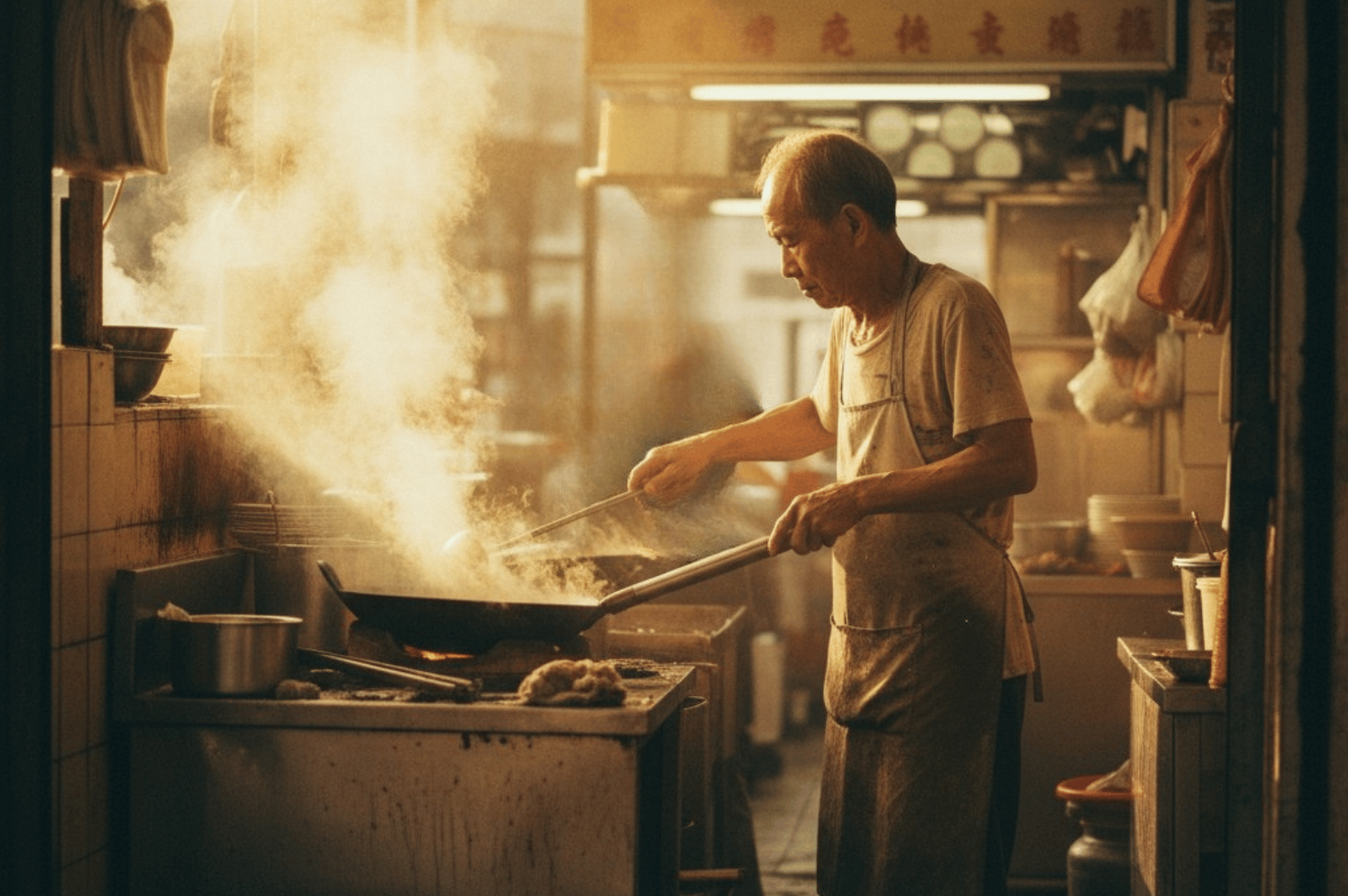Dawn, Before the Shutters Rise
There’s a stillness just before the stalls wake. In the predawn half-light of Chinatown Complex, steam begins to breathe from the first pots, and an old radio slips into a familiar melody. I watch a pair of hands trace motions they’ve honed for half a century—palms that know heat the way a fisherman knows tides. No timers, no scales. A pinch here, a stir there. The stall’s rhythm is older than its signage.
This series began as quiet visits with a camera and a notebook—simple documentation. But the more mornings I spent in Singapore hawker centers, the more urgency crept in. Every week, another elder mentions sore knees, long hours, or children with respectable office jobs. The craft lives so specifically in their fingers that the thought of it stopping feels like a small silence opening in the city.
Maxwell Wakes
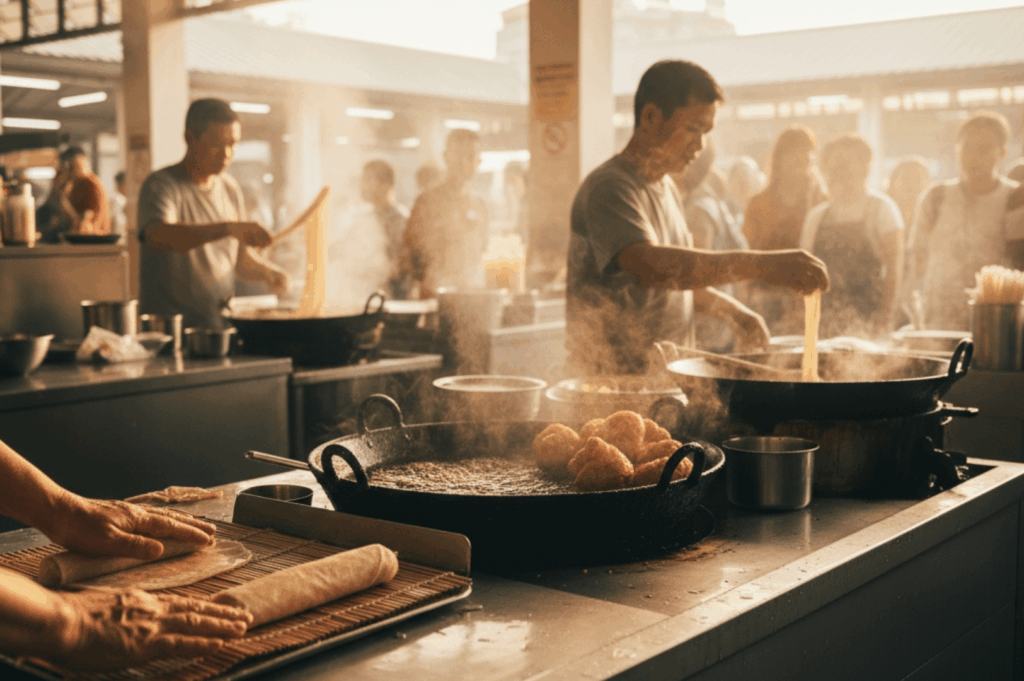
At Maxwell Food Centre, the day brightens quickly. The lights sharpen; queue lines unfurl like tape. I circle the rows, letting the morning choose the first story.
Rojak, Popiah & Cockle (#01-56): A Roll Measured by Thumb Pressure
A popiah skin warms on the pan like a held breath. The auntie works with an economy that borders on music—chili in one smooth arc, sweet sauce in a second, then turnip, lettuce, peanut, egg, all layered at a pace that makes the hand a metronome. She tucks, rolls, and seals with a press that carries just enough insistence to keep the skin from tearing. When I ask how she knows it’s tight enough, she smiles. “I just know.” My shutter clicks; the roll lands on the board with a soft, confident sound that tells me more than any recipe could.
Maxwell Fuzhou Oyster Cake (#01-06): Listening to Oil
The batter—milky, quietly alive—lifts and falls from the ladle with the weight of experience. A handful of oysters, herbs, peanuts, a touch more batter to close the circle, and then the crucial moment: the drop into oil. There’s a sound the hawker listens for—more than a hiss, less than a crackle—that says the temperature is right. She hears it over the sizzle of the wok next door and someone calling for kopi-o. When I ask what happens if the sound is off, she shrugs. “Then we wait. Or we feed the bin.” The discipline is in the listening, in the willingness not to rush.
China Street Hum Jin Pang (#01-28): Flick, Land, Float
Here the rhythm is flick, land, float. Dough pinched with two fingers, spun with a tiny movement I replay ten times later in slow motion, then eased into oil. Sweet or savory, the movement is the same. The pieces rise and turn themselves like they remember how. There’s a small joy in the hawker’s eye when a perfect puff appears—a quick nod, a tiny grin—then back to work. Perfection isn’t announced; it’s acknowledged and folded into the next batch.
Outside Maxwell, a Charcoal Memory
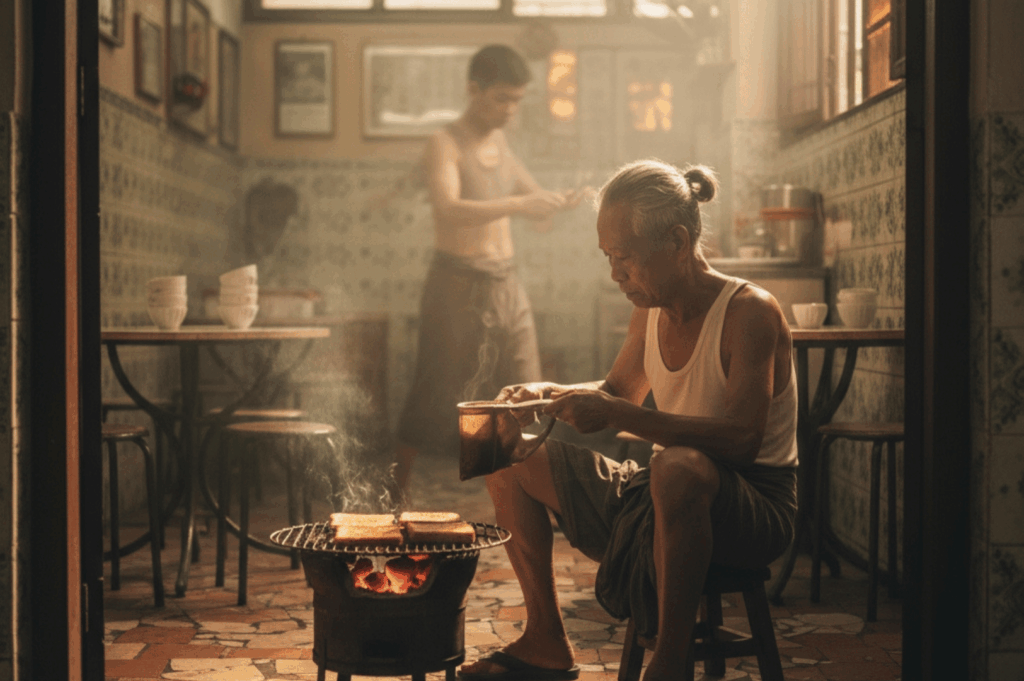
Not every tradition fits inside Maxwell. On a morning when the heat sits gently on the streets near Lavender, I step into Heap Seng Leong, where the ritual is toast and coffee, not trays and queues. The old charcoal grill leaves a faint, precise smokiness on the bread, and the kopi-gu-you—coffee with a pat of butter that slides into a gloss—arrives like a memory. The son moves between tables with a practiced calm. I ask about electric toasters, about easier ways to keep up. He laughs softly. “We do what we do.” It isn’t stubbornness. It’s a choice to keep a taste readable only through a particular flame.
Hands That Measure Without Tools
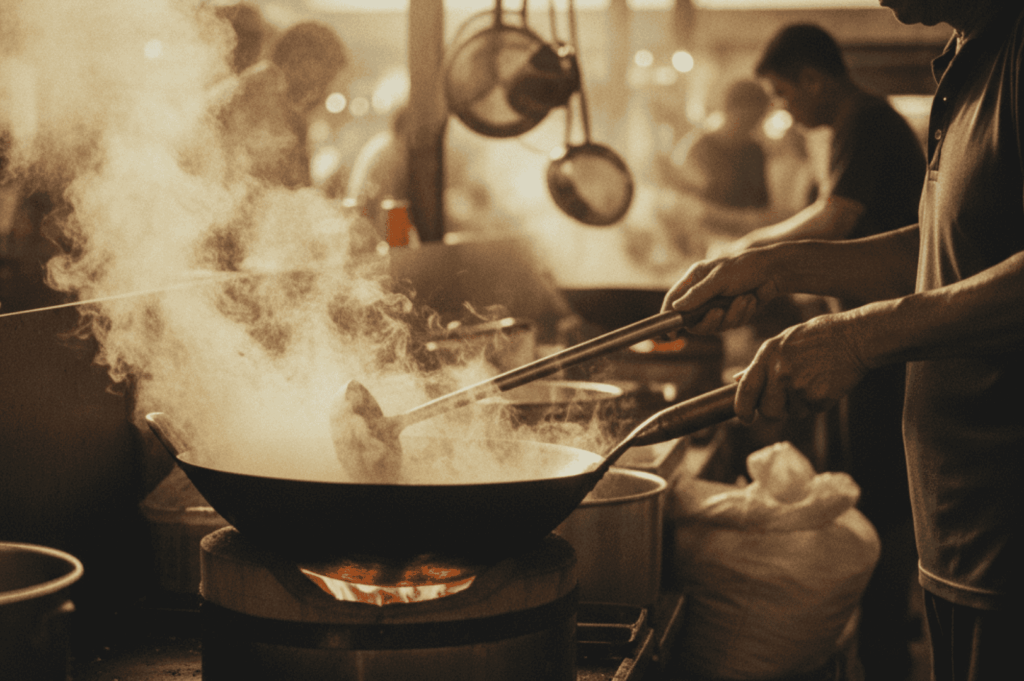
Everywhere I look, measuring tools are scarce, yet measurement is constant. The hand becomes the scale, the ear the thermometer, the eye the timer. Ask how long to fry and you’ll get a look that means you’ve asked the wrong question. They wait for a color that appears only in a certain heat; they listen for a tone in the oil that doesn’t form words; they feel resistance in a dough that can’t be written down. When I lift the camera, I’m not hunting novelty—I’m trying to show these small negotiations with time and temperature.
Recognition and a Warning
Hawker culture’s UNESCO inscription felt like both celebration and caution. The recognition says: this matters. The caution whispers: it could go. Many of the hands that built this living museum of Singapore local food are now in their seventies and eighties. They’ve held ladles and woks longer than most of us have held jobs, and their bodies remind them after service. Succession isn’t guaranteed. Apprenticeships are rare. The city can preserve stalls, but it cannot legislate a wrist motion.
What the Camera Can—and Can’t—Do
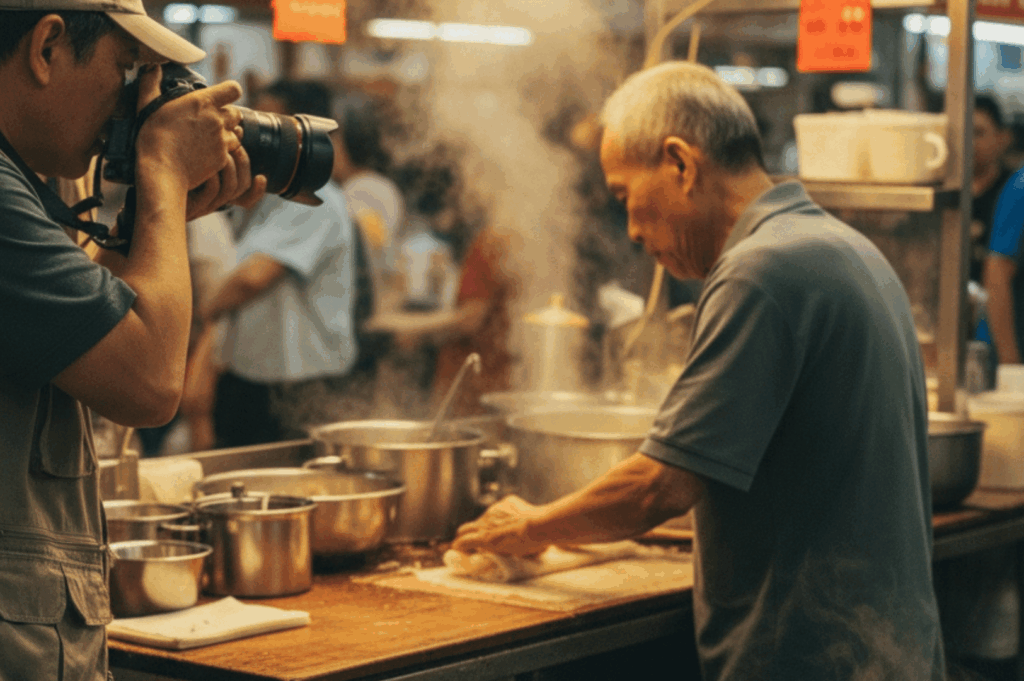
A photograph cannot keep a stall open or shorten a 12-hour day. It can bear witness. Each image in this series sits beside field notes—light direction, lens choice, what the hawker said when I asked a naive question. Sometimes the note is as simple as, “He turned the flame down when the fan above the stall kicked on.” Sometimes it’s a sketch of how the auntie’s thumb sealed the popiah—press, lift, press again. Without the notes, the photo risks becoming only pretty. With them, it becomes a small map of how the thing is done, in this place, by this person.
A Note to Newcomers
If you’re arriving fresh to this world—new residents, curious travelers—there’s a rhythm to observe before you lift a camera or phone. Queue first, decide quickly, clear your tray, give up your seat when you’re done. These courtesies are part of the taste; they’re how the space breathes. If you’re building your own food guide in Singapore, or simply seeking affordable dining in Singapore without losing the thread of tradition, this primer on Singapore hawker centers helps: history, stall types, and hawker center etiquette in one place. Additionally, if you’re interested in taking in Singapore’s views at golden hour, check out Mastering Singapore Golden Hour Photography for tips on how to capture the perfect sunset skyline.
Before I Leave
Before I leave Maxwell, I circle back. The queue at popiah is longer now. The auntie’s movements haven’t changed. Oyster cakes lift from the oil in a steady golden march; hum jin pang floats like paper lanterns turned edible. All I can do is stand in line, order, watch, and be grateful my camera was here in time to see what these hands can do. The local flavors of Singapore’s hawker centers are more than just a meal—they’re a living testament to a vanishing craft. If we are lucky, more hands will learn the same. If not, there will at least be a record—a quiet one—of how skill looked before it slipped from daily life.
